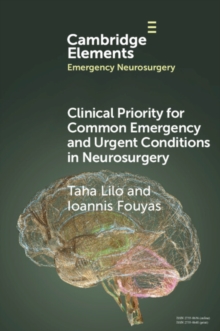
Acute Spontaneous Posterior Fossa Haemorrhage PDF
by Lauren (National Hospital for Neurology and Neurosurgery) Harris, Patrick (National Hospital for Neurology and Neurosurgery) Grover
Part of the Elements in Emergency Neurosurgery series
Description
Non-traumatic posterior fossa haemorrhage accounts for approximately 10% of all intracranial haematomas, and 1.5% of all strokes.
In the posterior fossa, a small amount of mass effect can have dramatic effects, due to its small volume.
This can be due to immediate transmission of pressure to the brainstem, or via occlusion of the aqueduct of Sylvius or compression of the fourth ventricle, leading to acute obstructive hydrocephalus, with the risk of tonsillar herniation.
Timely investigations and management are essential to maximise good outcomes.
This Element offers a brief overview of posterior fossa haemorrhage.
It looks at the anatomy, aetiology, management, and surgical options, with a review of the available evidence to guide practice.
Information
-
Download - Immediately Available
- Format:PDF
- Pages:Worked examples or Exercises
- Publisher:Cambridge University Press
- Publication Date:28/02/2024
- Category:
- ISBN:9781009456470
Information
-
Download - Immediately Available
- Format:PDF
- Pages:Worked examples or Exercises
- Publisher:Cambridge University Press
- Publication Date:28/02/2024
- Category:
- ISBN:9781009456470










